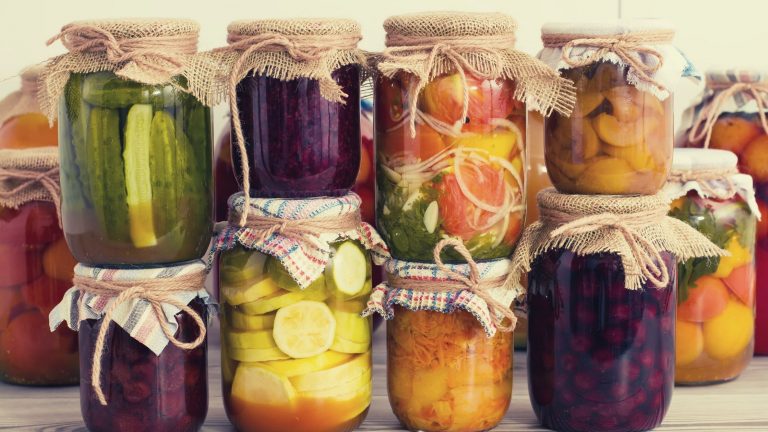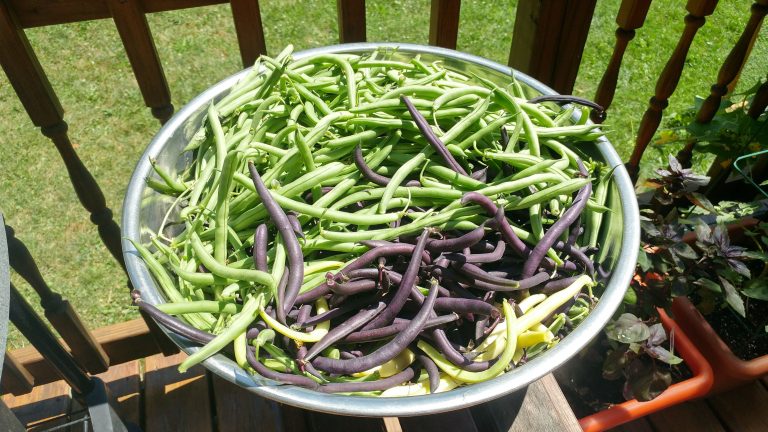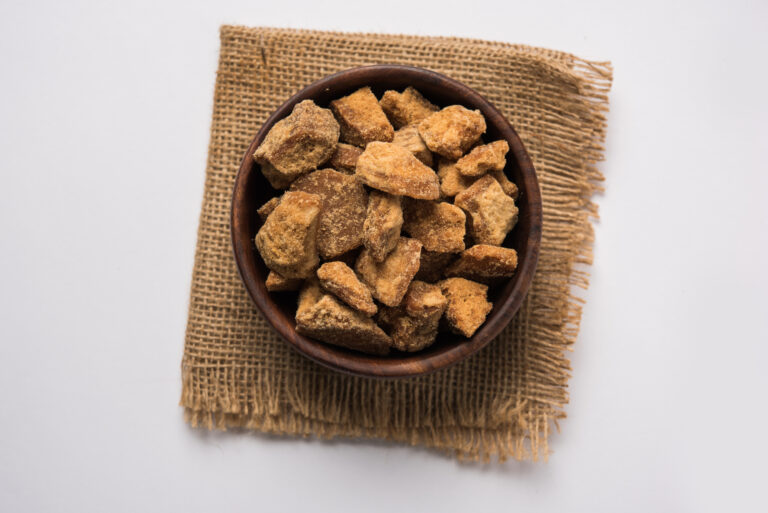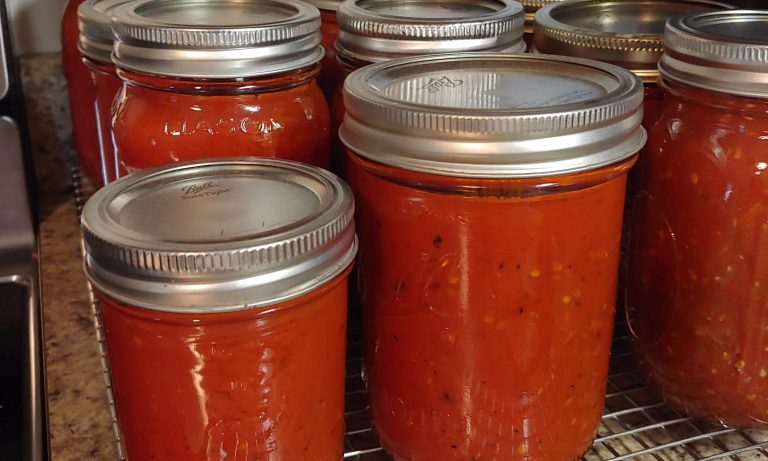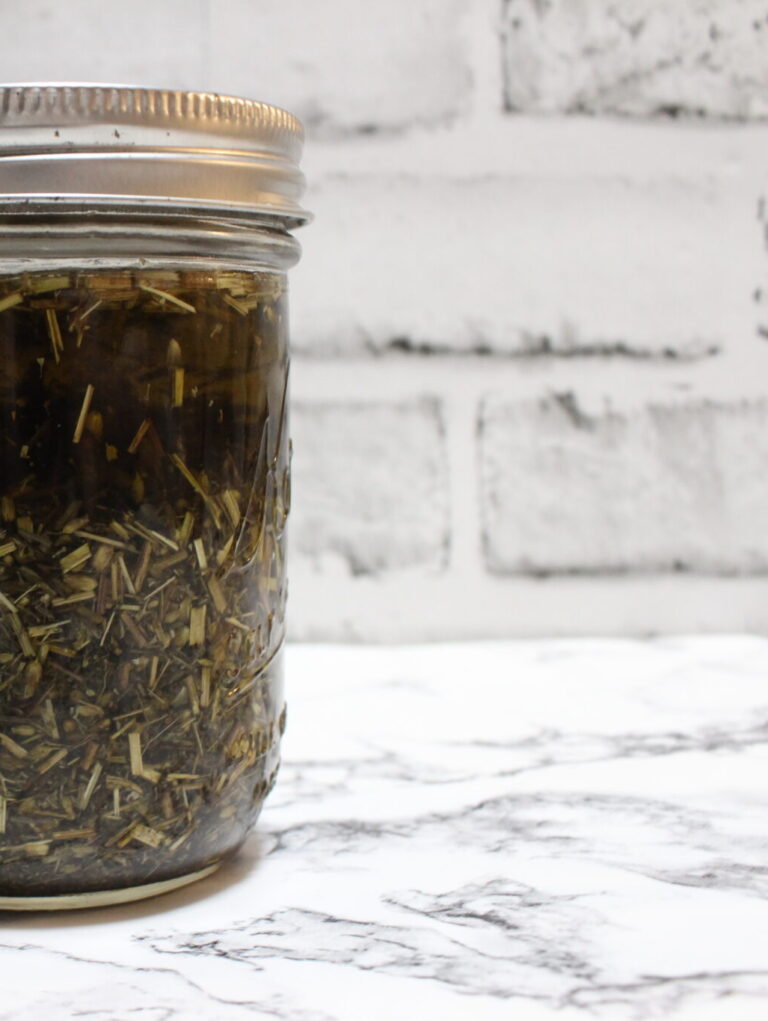This post may contain affiliate links.
Washing and storing lettuce properly is essential to keeping it fresh and long-lasting. This is especially true when you pick lettuce from your own garden!
Here are a few simple steps to ensure that your fresh-picked lettuce lasts at least a week!
Step 1: Pick Lettuce
Lettuce can get pretty tired and droopy in the sun’s heat, but it will perk up after a good watering and some cooler weather. The best time to pick lettuce is on a cool morning before the sun fully shines. Your lettuce will be crisper and fresher.

cooler parts of the day.
Step 2: Give lettuce a cold bath
After picking your lettuce, take it inside as soon as possible and run it in a cold bath in your clean sink (or a large bowl). Place the lettuce in the cold water until fully submerged, and let it sit for a few minutes. The cold water will bring new life to limp leaves and will make your lettuce nice and fresh.
Carefully stir the lettuce around to remove loose dirt and debris from the leaves. You may need to give heads of lettuce a few solid dunks to make sure you get all of the interior leaves.

It works great for rinsing and crisping salad greens.
Step 3: Spin your lettuce dry
The best way to dry your lettuce after soaking is with a high-quality salad spinner. If you have a lot of lettuce, spin it in batches for better drying. Fill the salad spinner halfway, then give it a vigorous spinning session.
If you don’t have a salad spinner, you can spin your salad a bit in your hands (inside your sink) or separate the leaves and press them lightly between two towels.

is by far the best spinner we have ever owned.
Step 4: Lay on a towel to dry lettuce more
Once spun or lightly pressed, move your lettuce to your counter-top on a clean dry dish towel. Spread it out and allow it to air dry for just a few minutes. Aiming a fan at your lettuce can help. Don’t let it sit out too long in any heat, or you’ll have to start over again!
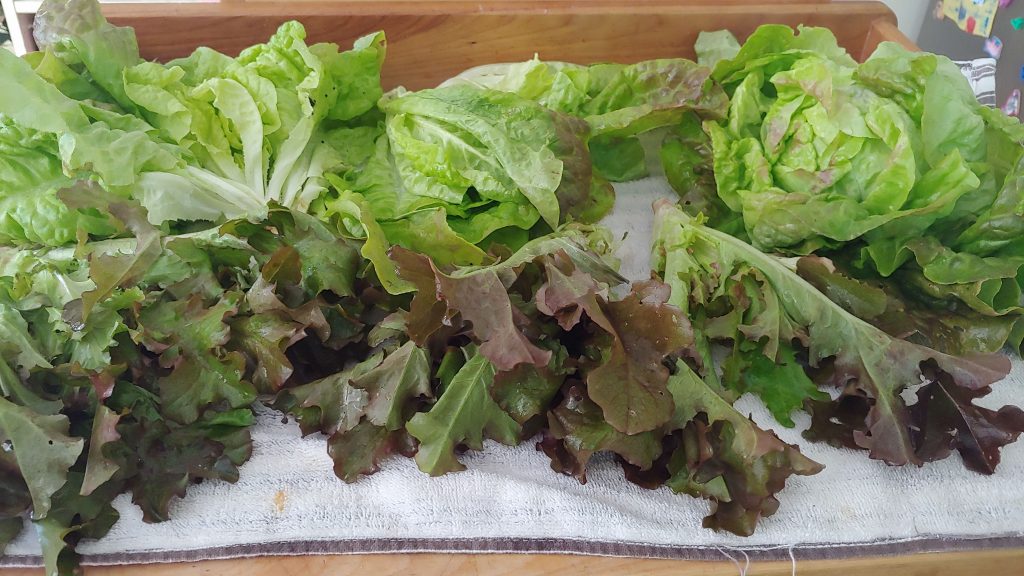
Step 5: Pack into bags or containers
When your lettuce is at least 90% dry (it can still have a few drops here and there), you are ready to pack it up. You want to pack it into a container that isn’t too snug but seals well. A resealable plastic bag or a plastic bag with a twist tie will work.
For a more sustainable option, consider recycled plastic salad containers or produce storage containers from the store.
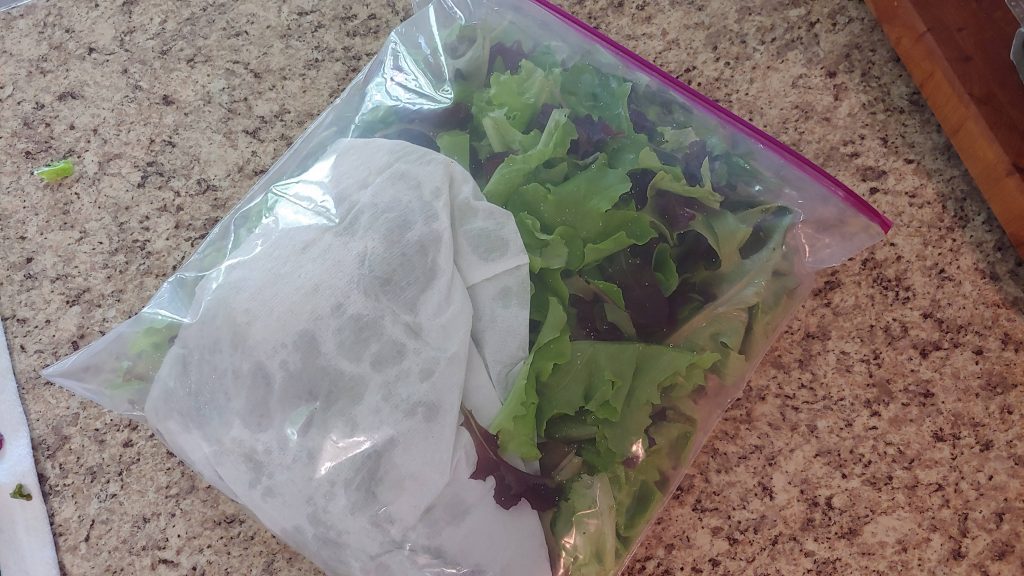
absorb remaining moisture.
You also need to ensure that any liquid left on your lettuce has somewhere to go other than sitting on the bottom of the container and getting slimy. A produce storage container has a tray built for this purpose. But you can also place a paper towel into your bag or plastic container. The paper towel will attract and retain excess moisture so your lettuce doesn’t sit in it.
Step 6: Store Lettuce in the refrigerator
Store your lettuce in a nice cold fridge (it doesn’t have to be in a produce drawer). We find that our lettuce often lasts more than a week with this careful cleaning and storage method. Pick out leaves that start to turn to save the rest of the lettuce from that fate.
Want to learn more about storing and preserving veggies? Check out our articles on storing carrots and freezing eggplant!
Carrie Williams Howe is an educational leader by day and an aspiring homesteader by night and weekend. She lives on a small homestead in Vermont with her husband, two children, and a rambunctious border collie. She blogs about her family's homestead life at The Happy Hive.

